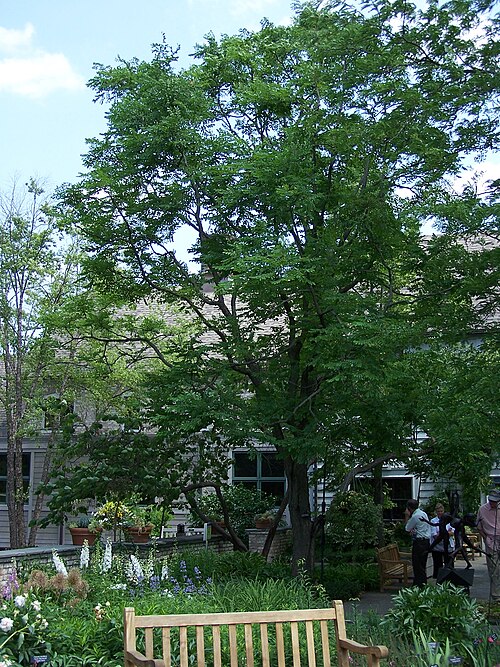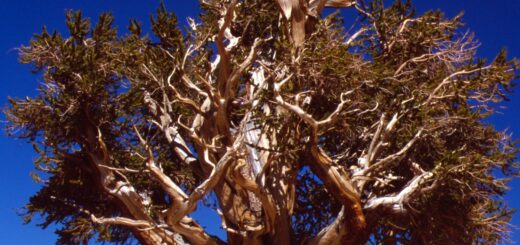Kentucky Coffee Tree – A Hidden Gem of the Forest

When you think of iconic American trees, towering oaks or golden aspens might come to mind, but let’s take a detour into the lesser-known with one of North America’s most interesting and underappreciated natives: the Kentucky Coffee Tree (Gymnocladus dioicus).
What’s in a Name?
The Kentucky Coffee Tree earned its quirky name from early settlers who roasted its seeds to brew a coffee-like drink. But a word to the wise: unroasted seeds are toxic, so don’t go nibbling on them straight from the pod! While it doesn’t contain caffeine, the roasted seed drink became a creative substitute for the real deal, especially in times when coffee was hard to come by.

Kentucky Coffee Tree fruits. image taken in mid August. Creative Commons | Author: Hardyplants – Source: https://commons.wikimedia.org/wiki/File:Gymnocladus-dioicus.jpg
Distinctive and Dramatic
Even among its forest peers, the Kentucky Coffee Tree stands out. With its thick, scaly bark and coarse, irregular branches, it often appears almost prehistoric. In fact, it’s sometimes referred to as a “ghost of the past,” believed to have once been dispersed by now-extinct megafauna like mastodons.
Its leaves are equally dramatic. One of the largest compound leaves of any North American tree, a single leaf can reach up to three feet long, made up of dozens of smaller leaflets. These large leaves give the tree a tropical vibe, making it a striking specimen in parks and landscapes.
Seasonal Magic
The Kentucky Coffee Tree is a bit of a late bloomer—literally. It leafs out later in the spring than most trees and drops its leaves early in the fall. For part of the year, it stands bare and bony against the sky, which only adds to its mysterious charm.
In early summer, you might catch the male trees producing sweet-smelling, greenish-white flowers, while female trees bear large, woody seed pods—often 5 to 10 inches long. These pods persist into winter, rattling in the wind like natural maracas.

Kentucky coffeetree in Harveng, Belgium – Creative Commons | Author: Jean-Pol GRANDMONT – Source: https://commons.wikimedia.org/wiki/File:Gymnocladus_dioicus_JPG1a.jpg
A Tree of Toughness
One of this tree’s best traits is its hardiness. It tolerates drought, poor soils, urban pollution, and even road salt. That makes it a great candidate for city planting, especially in areas where other trees might struggle. Despite its toughness, it’s not widely planted—though it definitely deserves more love.
Ecological and Cultural Value
Though the seeds are toxic to humans and many animals, squirrels and some birds have figured out how to safely nibble around them. And for humans, Indigenous peoples historically used the tree for medicinal purposes and tool-making.
As a nitrogen-fixer (through its relationship with soil microbes), it also helps improve soil quality, making it a quiet hero in the ecological community.
Should You Plant One?
If you’ve got space and patience, this slow-growing tree is worth the wait. Its unique character, minimal maintenance needs, and resilience make it a rewarding choice for eco-minded gardeners and arborists.
The Kentucky Coffee Tree isn’t your everyday backyard staple, but that’s part of its charm. It’s a relic of a wilder time, a rugged survivor, and a quiet reminder that even the underdogs of the forest have their own stories to tell.
References:
Wikipedia










